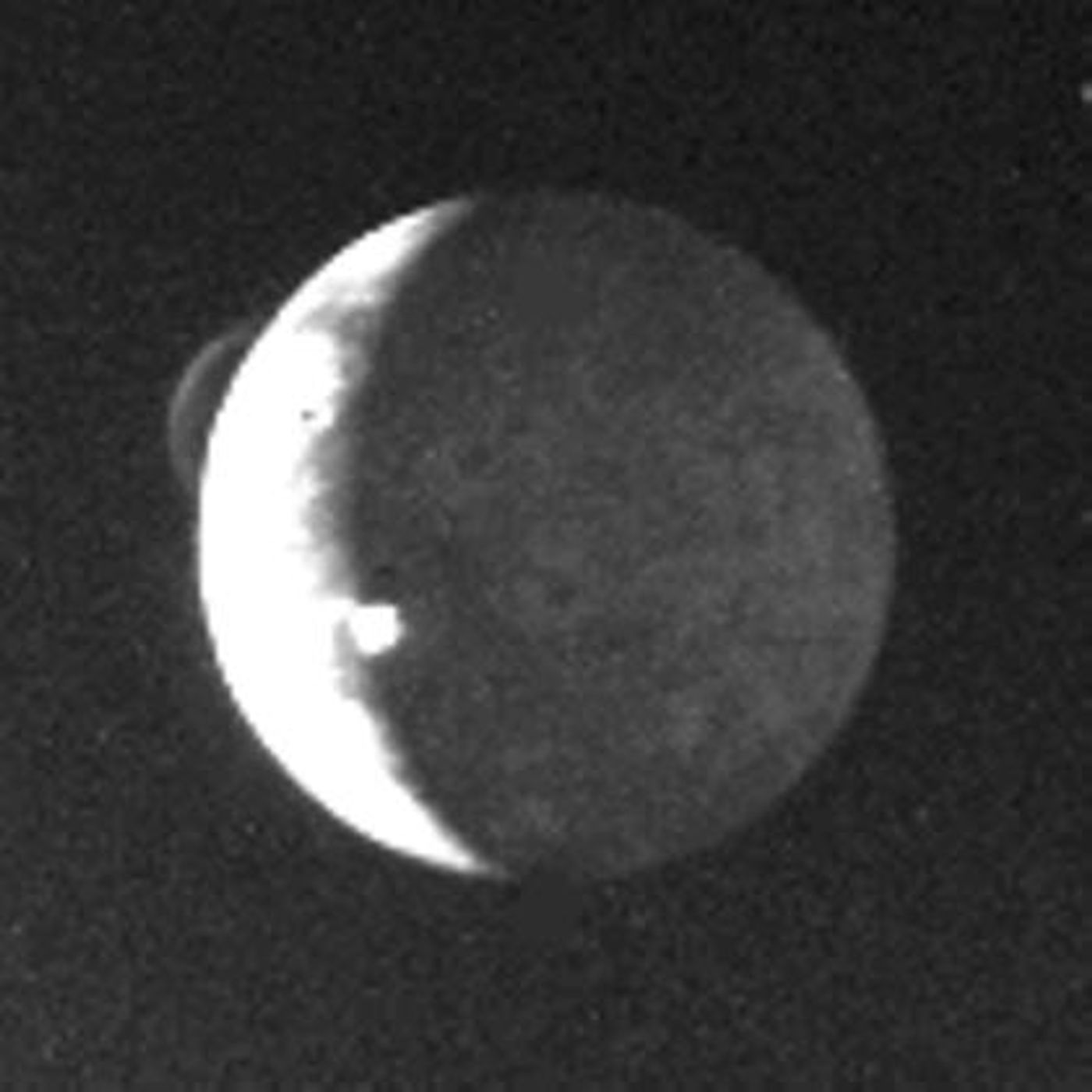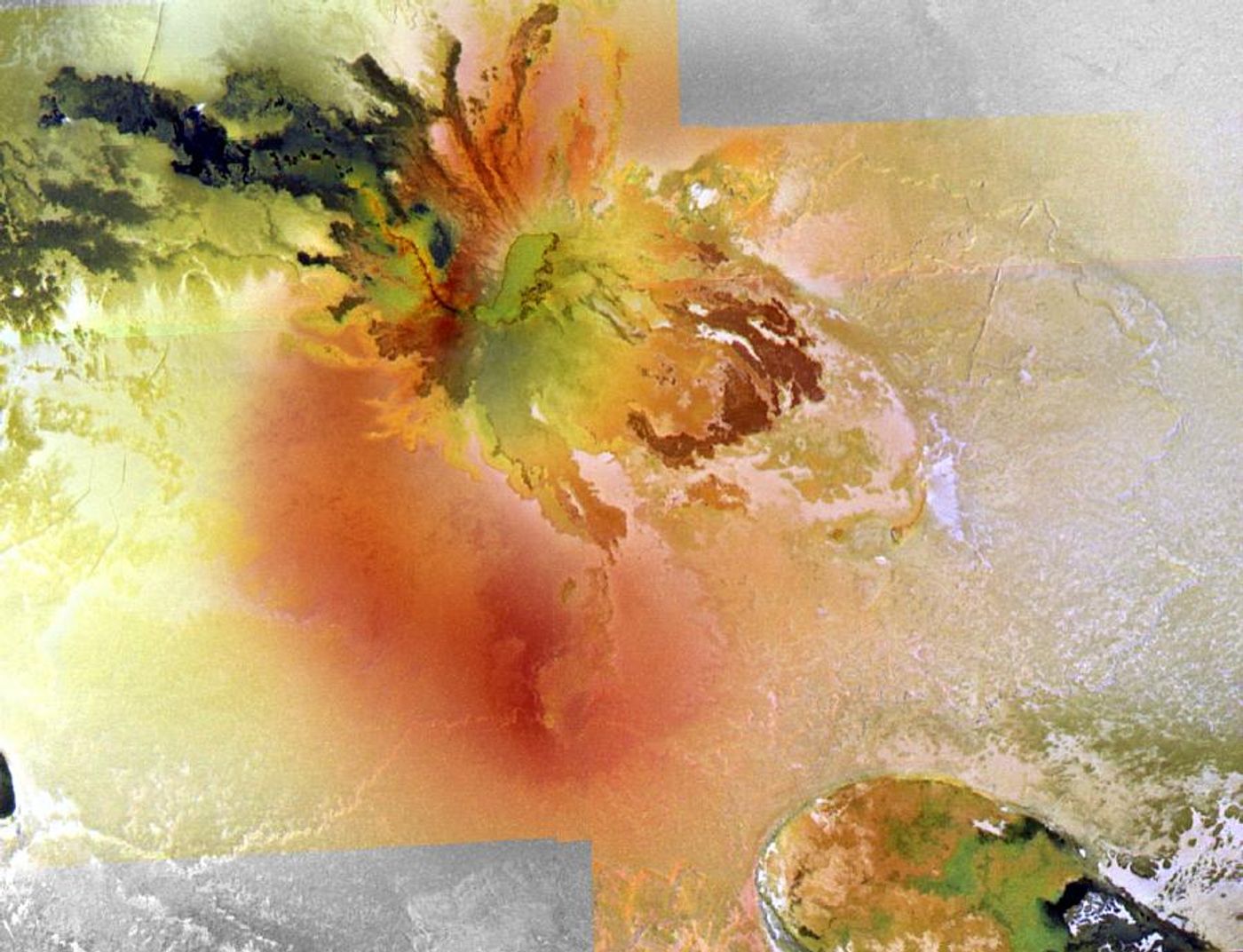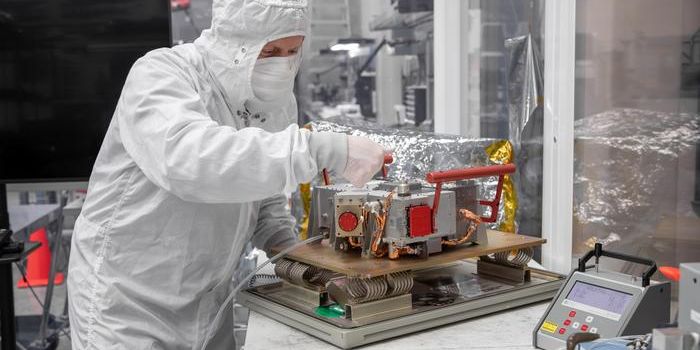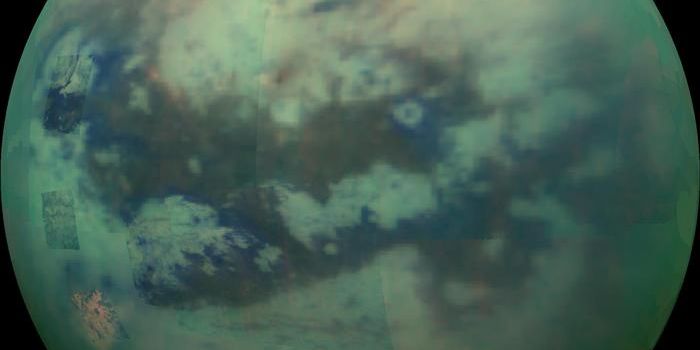Hundreds of Active Volcanoes on Jupiter's Moon, Io | Solar System Wonders
Image of volcanic plume on Io from NASA's Galileo spacecraft taken in June 1997. (Credit: NASA/JPL-Caltech/ University of Arizona)
Labroots previously discussed the history and exploration of Jupiter’s first Galilean moon, Io, which revealed one of the most geologically active worlds ever observed. That geologic activity is due to Io’s hundreds of active volcanoes, which is the result of a force known as tidal heating as Io is constantly being stretched and compressed due to the much larger gravity of Jupiter. While volcanism on Io was confirmed from images obtained from NASA’s Voyager 1 in March 1979, the potential for volcanism on this small moon was predicted prior to Voyager 1’s flyby.
Image of first evidence of active volcanism on Io taken by NASA's Voyager 1 in 1979. Plume can be seen in upper left, as well as bright object near center of moon. (Credit: NASA/JPL-Caltech)
Jupiter’s moon, Io, exhibits three types of eruptions styles: intra-patera, flow-dominated (aka Promethean), and explosion-dominated (aka Pillanian). Intra-patera eruptions involve volcanic flows that reside in surface depressions, also called calderas, but their formation remains uncertain. Flow-dominated eruptions are lava flows that build up over time, can be produced from a variety of vents or fissures, and resemble lava flows that have been observed in Kīlauea in Hawaii. Explosion-dominated eruptions are the plumes that have been observed by NASA’s Voyager 1 and 2 and the Galileo spacecraft, as well.
Image of intra-patera volcanism on Io taken by NASA's Galileo spacecraft in October 2001. (Credit: NASA' JPL-Caltech/University of Arizona)
Image of flow-dominated volcanism on Io taken by NASA's Galileo spacecraft in November 1999. (Credit: NASA' JPL-Caltech/University of Arizona)
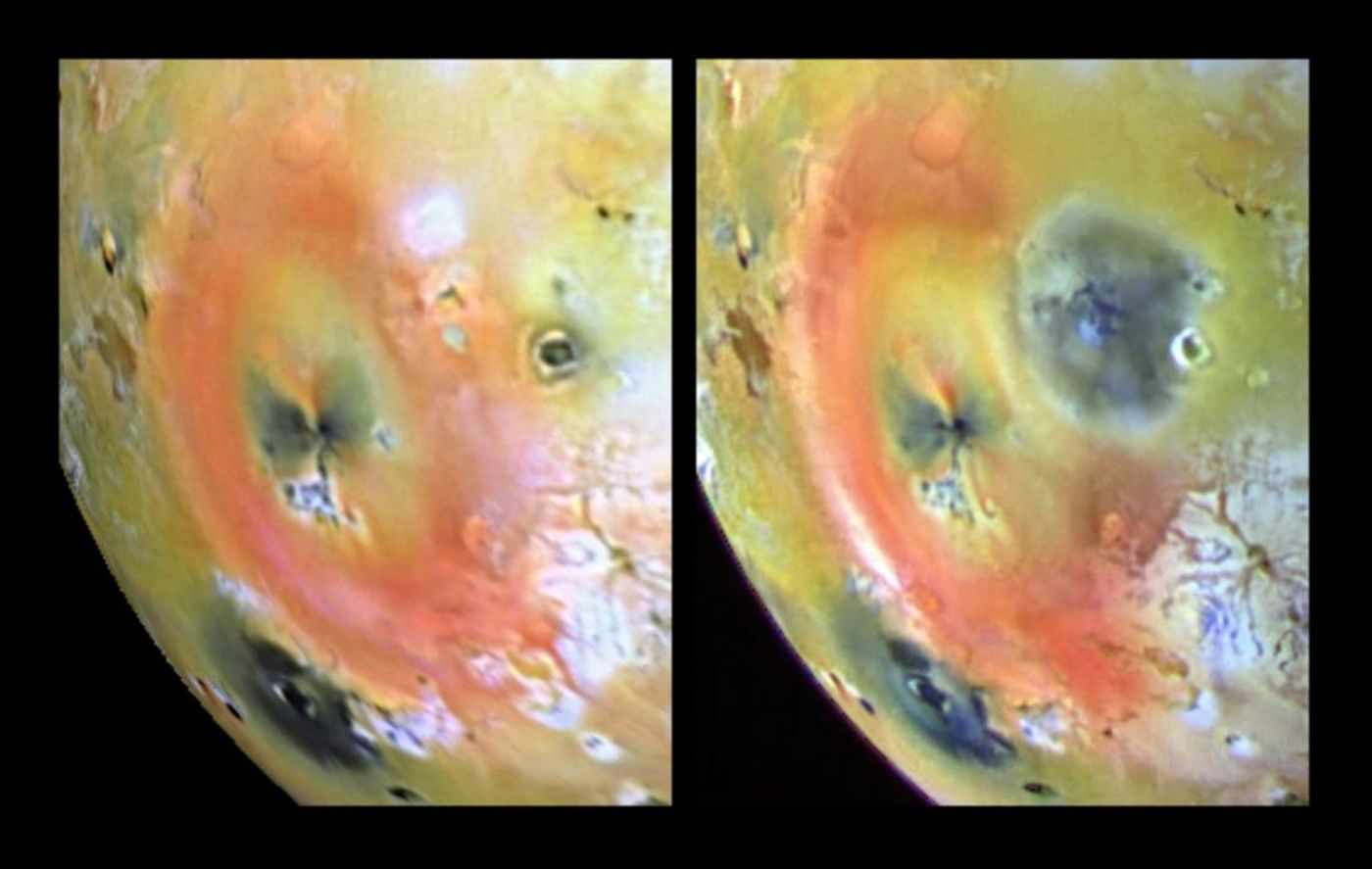
While Io is not an ideal location for astrobiology and finding life beyond Earth, Io and its volcanic eruptions are an example of how both weird and wonderful the universe is, and what is in store for us as we continue to scan the heavens for worlds outside of our solar system.
Despite its extensive exploration, there are currently no space missions planned for further exploration of this mysterious and wonderful world.
Sources: Labroots, NASA, Janet Stuhr Wood, BBC, Science, Science (1), JGR: Planets
As always, keep doing science & keep looking up!

